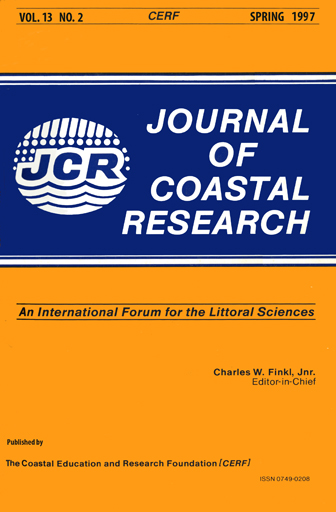Site Dependency of Shallow Seismic Data Quality in Saturated, Unconsolidated Coastal Sediments
Keywords:
Shallow seismic reflection profiling, Texas coastal plain, QuaternaryAbstract
Seismic tests were conducted along the southeastern Texas coast to (1) investigate the usefulness of land-based shallow seismic reflection profiling, (2) examine the influence of environment on data quality, (3) evaluate compressional wave sources for shallow profiling of unconsolidated sediments, and (4) determine the exploration depth range of shallow seismic reflection methods. Tests in three environments, including unvegetated beach, densely vegetated marsh, and densely vegetated floodplain, show that near-surface sediment characteristics strongly influence data quality. A modified soil probe hammer, which is a low-energy, broad-frequency-range seismic source, was used for the short reflection profiles at each site. Highest quality data were collected at the beach, where reflections were recorded as shallow as 7 m and as deep as 200 m. At the marsh and floodplain sites, surface wave velocities were higher, peak frequencies were lower, and exploration depths were limited. Despite similar target depths and near-surface water tables at each site, optimum acquisition parameters varied. Effects of extraneous noise associated with ambient conditions (wind, breaking waves, road traffic) were minimized with filters. Shallow seismic reflection methods can be applied to a variety of coastal geological and environmental problems including high-resolution studies of Quaternary strata, location of active near-surface faults, and delineation of buried archeological sites. On-land seismic surveys can also augment borehole data, guide borehole placement, and extend offshore surveys across the shoreline and onto the coastal plain.


